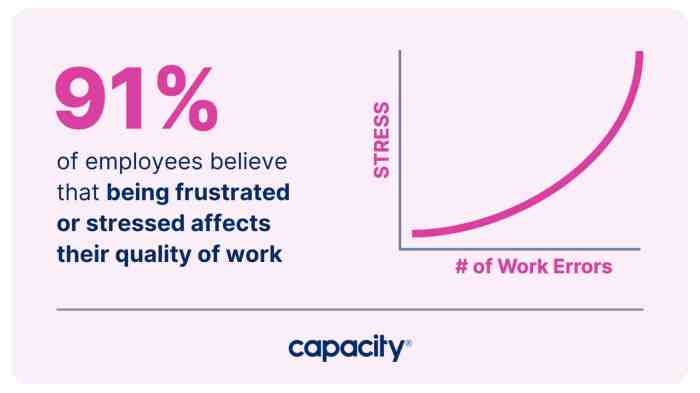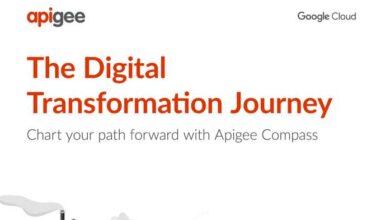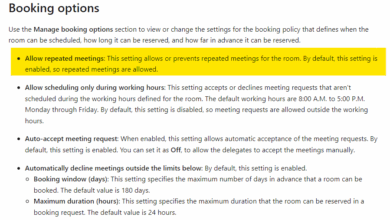
HR automation examples benefits are a game-changer for modern HR departments. It’s not just about automating tasks; it’s about streamlining entire processes, boosting efficiency, and freeing up HR teams to focus on strategic initiatives. From recruitment to performance management, automation is transforming how HR departments operate. This comprehensive guide dives deep into the practical applications, outlining the key advantages and highlighting real-world examples.
Imagine a world where tedious administrative tasks are handled seamlessly, data is consistently accurate, and employee engagement is boosted. HR automation empowers HR professionals to achieve these goals and more. This guide explores the various facets of HR automation, equipping you with the knowledge to effectively implement these strategies within your organization.
Introduction to HR Automation

HR automation is the use of technology to streamline and automate various human resources (HR) processes. It encompasses a wide range of tasks, from recruitment and onboarding to performance management and employee relations. This approach aims to free up HR professionals from repetitive administrative tasks, allowing them to focus on strategic initiatives and employee development.Core to HR automation is the principle of efficiency.
By automating routine processes, companies can reduce errors, improve response times, and ultimately save valuable time and resources. This increased efficiency translates to a more productive workforce and a better overall employee experience.
Types of HR Processes That Can Be Automated
HR automation can be applied to numerous HR processes. These range from simple tasks like scheduling employee absences to more complex ones such as performance reviews and compensation management. Key areas of automation often include:
- Recruitment and Onboarding: Automated tools can handle tasks such as applicant tracking, scheduling interviews, and onboarding new hires. This can significantly reduce the time and resources required for these critical HR functions.
- Payroll and Compensation: Software can automate calculations, deductions, and disbursement of wages. This reduces the risk of errors and ensures compliance with relevant regulations.
- Performance Management: Automation can facilitate performance reviews, goal setting, and feedback collection. Automated systems can also generate performance reports and track employee progress.
- Employee Self-Service: Providing employees with online access to their personal information, benefits, and other HR-related data can significantly reduce the workload on HR staff.
- Training and Development: Automation can streamline training materials, track employee progress, and deliver personalized learning paths. This can improve the efficiency and effectiveness of employee development programs.
Examples of Common Automated HR Tasks
Numerous HR tasks can be effectively automated. Some examples include:
- Applicant Tracking: Automated systems can screen resumes, schedule interviews, and track applicants throughout the recruitment process.
- Employee Onboarding: Tools can automate the process of collecting necessary paperwork, providing access to systems, and delivering welcome materials to new hires.
- Payroll Processing: Automated payroll systems can calculate wages, deduct taxes and benefits, and generate pay stubs.
- Performance Reviews: Software can facilitate the process of setting goals, conducting performance reviews, and providing feedback.
- Time and Attendance Tracking: Automation can track employee hours worked, calculate overtime, and generate reports.
HR Automation Tools
Various tools cater to specific HR needs. These tools range from simple, basic applications to complex, comprehensive systems.
| Tool Type | Functionality | Features | Examples |
|---|---|---|---|
| Applicant Tracking Systems (ATS) | Streamlining the recruitment process by automating tasks such as applicant tracking, scheduling interviews, and candidate management. | Resume parsing, interview scheduling, applicant scoring, reporting. | Greenhouse, Taleo, iCIMS |
| Payroll Automation Software | Automating payroll calculations, deductions, and disbursement, ensuring compliance with relevant regulations. | Automated tax calculations, compliance reporting, direct deposit, and integrated time tracking. | ADP, Paychex, Gusto |
| Performance Management Software | Automating performance review processes, including goal setting, feedback collection, and performance tracking. | Goal setting, feedback management, performance reviews, and reporting. | BambooHR, Qualtrics, 15Five |
| HR Information Systems (HRIS) | Centralizing HR data, providing a single source of truth for all HR information. | Employee self-service portals, integrated data management, reporting dashboards. | Workday, SAP SuccessFactors, Oracle HCM Cloud |
Benefits of HR Automation
HR automation is transforming the way organizations manage their human resources. By streamlining processes, automating repetitive tasks, and providing insightful data, HR departments can focus on strategic initiatives, improve employee experiences, and ultimately, drive business success. This shift frees up HR professionals to concentrate on higher-level activities, such as talent acquisition and development, while also ensuring that day-to-day administrative tasks are handled efficiently and effectively.The key benefits of HR automation extend far beyond simply reducing administrative burden.
It creates a more efficient and engaged workforce, improves data accuracy, and ultimately boosts the overall productivity of the entire organization. Automation allows for a more data-driven approach to HR, enabling organizations to make informed decisions based on real-time insights.
Impact on Employee Engagement
HR automation tools often include features designed to improve employee experience. These tools can automate communication channels, provide employees with self-service access to information, and streamline processes like onboarding and offboarding. This enhanced employee experience, in turn, fosters greater engagement and satisfaction. For example, automated welcome emails, personalized onboarding guides, and self-service portals for benefits enrollment and time-off requests can create a more positive and proactive experience for employees.
Reduction in Administrative Workload for HR Teams
HR automation dramatically reduces the administrative burden on HR teams. Repetitive tasks, such as data entry, scheduling, and document management, are automated, freeing up HR professionals to focus on strategic initiatives. This includes tasks like performance management reviews, compliance management, and recruitment. For instance, automated scheduling for meetings and reminders for deadlines reduces the time spent on manual administrative tasks, allowing HR to concentrate on strategic goals.
Improvement in Data Accuracy and Consistency
Automation significantly enhances data accuracy and consistency across the HR department. By automating data entry and validation, organizations minimize errors and ensure that data is consistently stored and updated. This leads to more reliable reports and insights, enabling better decision-making. For instance, using automated systems for payroll processing, benefits administration, and time and attendance tracking eliminates manual data entry, reducing the chance of errors.
Table: Specific Benefits of HR Automation
| Benefit | Description | Example in HR Automation | Impact |
|---|---|---|---|
| Cost Savings | Reduced labor costs associated with manual tasks. | Automating recruitment processes (e.g., screening applications, scheduling interviews) | Significant savings on recruitment and administrative expenses. |
| Time Efficiency | Faster completion of HR tasks and processes. | Automating onboarding procedures (e.g., sending welcome emails, providing access to resources) | Faster onboarding and processing of employee information. |
| Improved Accuracy | Reduced errors in data entry and processing. | Automated payroll processing, ensuring accurate calculations and deductions. | More reliable data for reporting and decision-making. |
| Enhanced Compliance | Improved adherence to regulatory requirements. | Automated compliance checks (e.g., verifying employee eligibility for benefits) | Reduced risk of penalties and improved reputation. |
Examples of HR Automation in Action: Hr Automation Examples Benefits
HR automation isn’t just a buzzword; it’s a powerful tool transforming how organizations manage their human capital. By automating repetitive tasks, HR departments can focus on strategic initiatives, improving employee experience and overall organizational efficiency. Successful implementations of HR automation are not just about technology; they’re about thoughtful planning and a clear understanding of how the tools can best serve the organization’s needs.Practical examples showcase the transformative impact of automation on various HR processes.
From streamlining recruitment to enhancing employee onboarding, automation is reshaping the modern workplace. By integrating automation tools, organizations can free up HR professionals to focus on strategic employee engagement and development initiatives, leading to a more positive and productive work environment.
Streamlining Recruitment Processes
Recruitment is often a time-consuming and resource-intensive process. Automation can significantly streamline this process, from initial candidate screening to final selection. Applicant tracking systems (ATS) automatically filter resumes based on predefined criteria, reducing the time HR teams spend manually reviewing applications. Automated email sequences can engage candidates throughout the process, maintaining a positive candidate experience and increasing efficiency.
This streamlined process not only saves time but also reduces the risk of human error, ensuring a more objective and fair selection process. Automated scheduling for interviews further streamlines the process and improves candidate experience.
HR automation offers impressive benefits, like streamlined onboarding and reduced administrative burden. Imagine the efficiency gains if you could automate tasks like scheduling and payroll processing, freeing up valuable time for HR professionals to focus on strategic initiatives. This kind of efficiency is certainly noteworthy, especially considering Sony’s latest pocket Playstation, which packs dual cams and a quad-core chip, demonstrating how technological advancements can boost performance in various sectors.
Ultimately, HR automation examples showcase a powerful blend of efficiency and strategic HR management.
Enhancing Employee Onboarding
A seamless onboarding experience is crucial for new hires to quickly integrate into the organization and feel welcome. Automation tools can automate the distribution of welcome packets, onboarding documents, and training materials. Automated welcome emails and personalized onboarding checklists ensure new employees receive the necessary information promptly and effectively. This systematic approach reduces the administrative burden on HR and ensures new hires have a positive and productive first few weeks.
By integrating these processes, the organization can enhance new employee engagement and reduce the time to productivity.
Improving Performance Management
Performance management is a critical component of any successful organization. Automation tools can automate performance reviews, creating structured feedback processes and promoting timely performance evaluations. Automated reminders and scheduling tools ensure that reviews are conducted on time, reducing delays and ensuring consistency. Automated goal setting and tracking systems can also enhance performance management, enabling more targeted and effective performance monitoring and development.
This structured approach fosters a culture of continuous improvement.
Facilitating Payroll and Benefits Administration
Payroll and benefits administration are often complex and time-consuming tasks. Automation tools can automate the calculation and disbursement of salaries, ensuring accuracy and efficiency. Automated benefits enrollment and administration tools allow employees to easily manage their benefits options and streamline the process for HR. Automation can also be used to track and manage employee leave requests, further improving efficiency and reducing errors.
Integration of these processes ensures compliance and reduces the administrative burden.
HR automation offers tons of benefits, like streamlined onboarding and improved employee engagement. For example, automating tasks frees up HR staff to focus on more strategic initiatives. Meanwhile, the complexities of online content moderation are highlighted in Germany, as Twitter navigates a tricky censorship line, as seen in this recent article. Ultimately, efficient HR automation solutions are crucial for companies to stay ahead in today’s competitive market.
HR Automation Solutions and Applications
| HR Automation Solution | Description | Real-World Application | Benefits |
|---|---|---|---|
| Applicant Tracking Systems (ATS) | Software for managing the recruitment process. | Filtering resumes, scheduling interviews, tracking candidate progress. | Improved efficiency, reduced manual effort, objective candidate selection. |
| Employee Onboarding Platforms | Systems for managing new hire paperwork, training materials, and initial tasks. | Automating welcome packets, assigning onboarding tasks, tracking progress. | Faster onboarding, reduced administrative burden, improved employee experience. |
| Performance Management Software | Tools for tracking goals, providing feedback, and conducting performance reviews. | Automating performance reviews, scheduling feedback sessions, tracking progress against goals. | Improved performance evaluation, timely feedback, objective performance measurement. |
| Payroll and Benefits Administration Software | Systems for calculating salaries, managing benefits, and handling employee leave. | Automating salary calculations, processing benefits enrollment, managing leave requests. | Accurate payroll, streamlined benefits administration, reduced administrative errors. |
Implementation Strategies for HR Automation
Implementing HR automation isn’t a one-size-fits-all process. A successful rollout requires careful planning and execution, tailored to the specific needs and resources of the organization. This involves understanding existing workflows, selecting appropriate tools, and ensuring smooth integration with existing systems. The key to success lies in a methodical approach that prioritizes employee training and ongoing support.
Evaluating Current HR Processes for Automation Potential
Identifying processes ripe for automation is crucial. A thorough evaluation of current HR procedures helps pinpoint areas where automation can streamline tasks and improve efficiency. This includes analyzing tasks like recruitment, onboarding, payroll, performance management, and employee self-service. Detailed documentation of each step in these processes, noting the time spent on each, will highlight potential areas for optimization and automation.
HR automation offers tons of benefits, like streamlining recruitment processes and boosting efficiency. However, we need to be mindful of how these tools can sometimes exacerbate the “technological tyranny of the minority,” where a small group of tech-savvy individuals or companies shape the digital landscape to their own advantage , potentially leaving others behind. Despite this, well-designed HR automation, when used correctly, can ultimately improve fairness and accessibility in the workplace for everyone, ensuring a truly inclusive approach.
For example, if a significant portion of time is spent on repetitive data entry, that is a clear indicator for automation.
Selecting the Right HR Automation Tools
Selecting the right HR automation tools is critical. Factors like the size and complexity of the organization, budget constraints, and existing IT infrastructure should all be considered. A detailed comparison of available tools, including features, pricing, and vendor support, is essential. Prioritize tools that integrate seamlessly with existing systems, offer robust reporting capabilities, and provide clear user documentation.
Consider the specific needs of your HR department. For instance, a company focused on remote work might require tools with features for remote onboarding and management.
Training Employees on New Automated Systems
Employee training is paramount to successful HR automation implementation. A robust training program should cover the functionalities of the new system, including how to use the platform effectively and troubleshoot common issues. Training should be tailored to different roles within the HR department and the employees who will interact with the automated system. This will empower employees to leverage the tools effectively and overcome any learning curve.
This could involve hands-on workshops, online tutorials, or even dedicated training sessions.
HR Automation Implementation Stages
Effective implementation involves a structured approach. The following table Artikels the stages of HR automation implementation and the associated tasks:
| Stage | Tasks | Timeline | Responsibilities |
|---|---|---|---|
| Phase 1: Assessment and Planning | Identify automation opportunities, evaluate existing processes, select appropriate tools, and create a detailed implementation plan. | 2-4 weeks | HR leadership, IT, and relevant stakeholders |
| Phase 2: System Setup and Configuration | Configure the chosen HR automation tools, integrate them with existing systems, and establish data migration strategies. | 4-6 weeks | IT department, HR specialists |
| Phase 3: Training and Testing | Develop and deliver training programs for employees, conduct thorough testing of the automated system, and address any identified issues. | 2-4 weeks | HR training team, HR specialists, IT |
| Phase 4: Go-Live and Monitoring | Deploy the HR automation system, monitor its performance, and make necessary adjustments. | Ongoing | HR leadership, IT, and HR specialists |
Challenges and Considerations

Implementing HR automation, while offering significant benefits, also presents hurdles. Careful planning and proactive strategies are crucial to successfully navigating these challenges and maximizing the return on investment. A thorough understanding of potential obstacles, coupled with robust mitigation plans, is essential for a smooth transition and lasting success.Understanding the intricacies of data security, resistance to change, and ongoing system maintenance is paramount to long-term success.
Choosing the right tools and strategies for mitigating these obstacles will lay the groundwork for a positive employee experience and a streamlined HR function.
Potential Implementation Obstacles
Successfully implementing HR automation requires anticipating and addressing potential roadblocks. These obstacles can range from technical issues to cultural resistance. Proactive planning and adaptability are vital to overcoming these challenges.
- Data Migration Challenges: Migrating existing HR data to a new automation system can be complex and time-consuming. Inaccurate data or incomplete migration processes can lead to errors and inconsistencies. Careful planning, thorough testing, and data validation are essential for a smooth transition.
- Resistance to Change: Employees and HR professionals may resist adopting new automation tools. This resistance often stems from concerns about job security, lack of understanding, or a fear of the unknown. Effective communication, training, and demonstrating the tangible benefits of automation are vital to addressing this concern.
- Integration Issues: Integrating new HR automation tools with existing systems can be a significant technical challenge. Incompatible data formats, lack of proper APIs, and insufficient technical expertise can hinder integration efforts. Careful system selection, robust testing, and dedicated IT support are crucial to successful integration.
Data Security and Privacy
Data security and privacy are paramount in HR automation. Sensitive employee data, including personal information, salary details, and performance evaluations, must be protected from unauthorized access and breaches. Implementing robust security measures and adhering to data privacy regulations are crucial to maintaining employee trust.
- Data Encryption: Encrypting sensitive data both in transit and at rest is a critical step. This practice safeguards the data from unauthorized access during storage and transmission.
- Compliance with Regulations: Adhering to data privacy regulations, such as GDPR or CCPA, is essential. Implementing processes and policies that ensure compliance with these regulations is vital.
- Access Control: Implementing strict access controls to limit data access to authorized personnel only is crucial. Regular security audits and access reviews are essential to ensure the ongoing effectiveness of security measures.
Ongoing Monitoring and Evaluation
Continuous monitoring and evaluation of HR automation systems are crucial for maintaining efficiency and effectiveness. Regular performance analysis, feedback collection, and system updates are essential to ensure the system meets evolving needs and provides the desired value.
- Performance Metrics: Tracking key performance indicators (KPIs) such as processing time, accuracy rates, and user satisfaction is essential. These metrics provide insights into system performance and areas for improvement.
- Feedback Mechanisms: Establishing feedback mechanisms to collect input from HR staff and employees is vital. This input helps identify pain points and areas where the system can be improved or adjusted.
- System Updates: Regular system updates and upgrades are essential to address security vulnerabilities, incorporate new functionalities, and maintain compatibility with evolving technologies.
Change Management Strategies, Hr automation examples benefits
Effective change management strategies are essential to ensure a smooth transition to HR automation. Clear communication, comprehensive training, and employee engagement are key elements in mitigating resistance and fostering adoption.
- Communication Plans: Develop clear communication plans that Artikel the reasons for automation, the benefits for employees, and the steps involved in the transition. This transparency helps build trust and reduce uncertainty.
- Comprehensive Training: Provide comprehensive training to HR staff and employees on how to use the new automation tools. Practical hands-on training and ongoing support are essential for successful adoption.
- Employee Engagement: Foster employee engagement by involving them in the process of designing and implementing HR automation tools. Involving them helps build buy-in and support for the new system.
Mitigation Strategies for Challenges
Addressing potential obstacles proactively is critical for a successful HR automation implementation.
| Challenge | Mitigation Strategy | Example | Expected Outcome |
|---|---|---|---|
| Data Migration | Employ a phased approach to data migration, testing thoroughly at each stage. Use data validation tools to identify and correct discrepancies. | Migrate data in batches, testing each batch before moving to the next. | Accurate and complete data transfer to the new system. |
| Resistance to Change | Conduct comprehensive training sessions, highlight the benefits for employees, and encourage feedback throughout the implementation process. | Develop a communication plan outlining the reasons for automation and the benefits for employees. | Increased employee adoption and reduced resistance to change. |
| Integration Issues | Conduct thorough system compatibility checks and test integrations with existing systems before implementation. Seek expert IT support if necessary. | Develop a detailed integration plan with specific timelines and responsibilities. | Seamless integration of the automation system with existing tools and platforms. |
| Data Security | Implement strong encryption protocols, access controls, and regular security audits. Comply with relevant data privacy regulations. | Employ two-factor authentication and data encryption. | Protection of sensitive employee data and compliance with regulations. |
Future Trends in HR Automation
HR automation is rapidly evolving, moving beyond basic tasks to encompass more complex processes and sophisticated technologies. This evolution is driven by the need for increased efficiency, improved employee experiences, and better data-driven decision-making within HR departments. The future of HR automation will be shaped by the integration of emerging technologies, particularly artificial intelligence (AI) and machine learning (ML).The future of work is being reshaped by automation, which is transforming how businesses operate and how employees engage with their work.
HR automation is at the forefront of this transformation, with the potential to dramatically change the way HR functions are executed. This change will not only increase efficiency but also lead to more strategic HR initiatives focused on employee development, engagement, and well-being.
Emerging Trends in HR Automation
The field of HR automation is poised for significant growth, with new trends emerging that promise to reshape HR departments and their interactions with employees. These trends are not isolated occurrences but rather interconnected developments that work together to create a more sophisticated and efficient HR landscape. Key emerging trends include intelligent automation, predictive analytics, and the integration of HR with other business systems.
Role of AI and Machine Learning in HR Automation
AI and machine learning are revolutionizing HR automation by enabling more sophisticated and accurate data analysis and decision-making. AI-powered chatbots can handle routine employee inquiries, freeing up HR staff to focus on more strategic tasks. Machine learning algorithms can analyze large datasets of employee data to identify trends and predict future needs, enabling proactive interventions and improved employee experience.
Impact of Automation on the Future of Work
Automation is fundamentally altering the future of work, demanding that HR professionals adapt to new roles and responsibilities. The future of work will be characterized by a greater emphasis on human-machine collaboration, where HR professionals leverage automation tools to enhance their effectiveness and focus on more complex tasks.
Innovative Applications of HR Automation in the Future
The innovative applications of HR automation will be vast and varied. Imagine AI-powered tools that automatically assess employee skills and recommend personalized development plans. Real-time performance tracking and feedback systems powered by machine learning could offer immediate support and guidance to employees. HR systems that integrate with employee scheduling tools and time tracking could lead to greater efficiency and accuracy in payroll processing.
Comparison of Current and Future HR Automation Trends
| Category | Current Trends | Future Predicted Trends | Description |
|---|---|---|---|
| Automation Types | Rule-based automation, Robotic Process Automation (RPA) | Intelligent Automation (IA), Machine Learning (ML)-driven automation | Current trends focus on repetitive tasks, while future trends will involve systems capable of learning and adapting to changing situations. |
| Data Analysis | Basic data reporting | Predictive analytics, AI-powered insights | Current trends focus on reporting historical data. Future trends will involve the ability to forecast future needs and trends, based on AI analysis. |
| Employee Interaction | Basic HR portals, emails | AI-powered chatbots, personalized learning platforms | Current methods of interaction are limited. Future trends will allow more dynamic interactions, providing a more tailored experience for employees. |
| Integration | Limited integration with other business systems | Seamless integration with other business systems (e.g., payroll, finance) | Current trends often involve siloed systems. Future trends will focus on connecting different systems for a more holistic view of employee data. |
Closure
In conclusion, the benefits of HR automation are undeniable. From increased efficiency and reduced costs to improved employee engagement and data accuracy, the advantages are substantial. By implementing smart strategies and choosing the right tools, organizations can reap significant rewards. The future of HR is automated, and this guide equips you to navigate the transition successfully.






